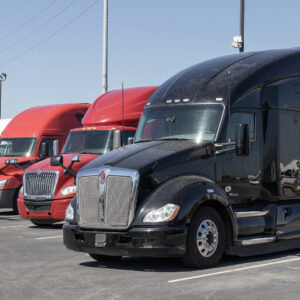Pennsylvania’s congressional delegation should oppose renewed efforts on Capitol Hill to allow bigger trucks on the nation’s highways. The state already has a deadly crash problem with existing trucks.
The Fatality Analysis Reporting System (FARS), considered the most complete and accurate crash dataset, shows a total of 163 fatalities in crashes involving large trucks in the state in 2021, the most recent year with data available. That is nearly a 23 percent increase compared to the previous year.
But those yearly fatalities are likely to grow if some in Congress have their way. One proposal currently under consideration would create a 10-year “pilot project” which would allow 91,000-pound trucks on our roads – five and a half tons heavier than today’s current limits. The goal: to see how many of these trucks are involved in crashes and to report the number of injuries and deaths. The usual necessary years of data analysis and testing? Not for these 91,000-pound behemoths. The goal is to skip the typical due diligence and put them on our roads immediately. Motorists on the roadways would become the guinea pigs in this experiment, with lives on the line.
The proposal is on the table at the same time as the country is in the throes of a disturbing trend in road safety. FARS shows nationally a total of 5,866 fatalities in crashes involving large trucks in 2021, a 17.2 percent increase compared to the previous year and the most in a single year since 1980. Opening our highways across the country and in Pennsylvania to an experimental 10-year “pilot project” given these trends would make addressing these public safety challenges even more difficult, particularly with the highly trafficked, cross-country Interstate 80 bisecting the state.
While the nation’s law enforcement agencies are lining up against efforts to allow bigger trucks, the federal government also has concluded it is a bad idea. Back in 2016, the U.S. Department of Transportation (USDOT) weighed in on the safety of the issue when it released its Comprehensive Truck Size and Weight Limits Study Final Report to Congress.
The report recommended against any increases in the size or weight of trucks. USDOT found serious safety problems, finding a 47 percent to 400 percent higher crash rate for heavier trucks when compared to standard 80,000-pound trucks, in limited state testing. Heavier trucks were found to have a higher out-of-service violation rate and an 18 percent higher brake violation rate when compared to 80,000-pound trucks.
Not a single product on the market would be released to the public with such a terrible track record.
There are better ways to collect data on heavier or longer trucks than exposing motorists to real dangers. Both USDOT and the Transportation Research Board (TRB), which is a division of the National Academy of Sciences, Engineering and Medicine, gave specific recommendations to collect comprehensive data, including conducting off-road operational tests. If proponents are serious about real results and not just a backdoor way to increase truck size or weight, they would embrace the USDOT and TRB recommendations and not support turning motorists into guinea pigs.
The Pennsylvania congressional delegation should reject heavier and longer trucks and oppose experimenting with the lives of state motorists.
Please follow DVJournal on social media: Twitter@DVJournal or Facebook.com/DelawareValleyJournal

